By Christopher Miskimon
A small party of about 40 German soldiers had infiltrated the Australian lines around the besieged town of Tobruk, Libya, during the night of April 13, 1941. They began setting up a half dozen machine guns, several mortars, and even a pair of small infantry guns laboriously dragged through the desert sands. It was a foothold the Germans could use to expand into the perimeter and capture the town. They began firing at the nearest Australian unit, B Company of the 2-17 Infantry Battalion. The Aussies replied with rifles and machine guns, but it was tough going. A party consisting of Lieu- tenant Austin Mackell and five pri- vates, along with Corporal John Hurst Edmondson, decided to mount a counterattack to drive the Germans back.
The men clutched their bayoneted Lee-Enfield Rifles tightly and moved into the darkness, attacking the enemy fiercely despite the machinegun fire thrown at them. Edmondson was hit twice but continued on, killing one enemy with his bayonet. Nearby, Mackell fought as well, but soon he was in dire need of help. His bayonet broke and the stock of his Lee-Enfield was shattered while fighting the Germans, at least three of whom were now attacking the young officer. Edmondson waded into the fray without hesitation, shooting or bayoneting all of them with his rifle. During the action he was mortally wounded. His comrades, saved by his actions, carried him back to their own lines, where he died four hours later. The Germans were defeated and the line was restored. Edmondson’s feat of bravery was the talk of Tobruk afterward and he would be the first Australian to be awarded the Victoria Cross in World War II.
The Lee-Enfield rifle is one of the most widely used bolt-action military rifles in the world, surpassed only by the Model 1898 Mauser and its derivatives in sheer numbers. Entering service at the dawn of the 20th century, it is still seeing active use well into the present century. It is the iconic rifle of the British Empire and it is still seen everywhere the Empire went, from Europe to remote regions in Africa and Asia. Soldiers in Afghanistan today are still being fired upon with the same Lee- Enfields British troops carried over the top in World War I.
The Lee-Enfield had its origins in the late 19th century, when repeating rifles firing full-powered cartridges were coming to the fore. Its direct predecessor was the Lee-Metford, a similar bolt-action design that brought the British military a state-of-the-art weapon comparable to the latest Mausers. The rifle used a magazine and bolt system developed by American inventor James Lee. Approximately 13,000 were built in 1889 and distributed to the army for field testing. A gradual series of product improvements led to an upgraded model being standardized in 1892, but the rifle still suffered from a few weaknesses such as barrel wear and
poor sights. After testing, further refinements were made to the weapon, resulting in the Lee-Enfield Mark I in 1895. The name combined James Lee’s design with the Royal Small Arms Factory’s location at Enfield Lock, Middlesex. Thus the name of the famous rifle was established, even though further refinement continued over the following decade.
The standardization of the Lee-Enfield into its most long-serving form took a number of years and is a reflection of the state of rifle development in the early 20th century. At the time there was considerable discussion about the use of rifles versus carbines, the rifle being a full-length weapon with a barrel length of 30 inches or more for use by infantry. Carbines were intended for cavalry use and had shorter barrels for more convenient use on horseback, with lengths of 16 inches to 22 inches being common. Full-length rifles had the advantage of greater accuracy at long ranges. Most designs of the period had sights graduated for distances of 2,000 yards or more, but some critics felt that was too far for any sort of accurate fire and recommended a shorter rifle, which would save production mate- rial and lighten the soldier’s burden. Opponents of this view felt the rifle could be effective at long distances using volley fire and loathed any decrease in accuracy.
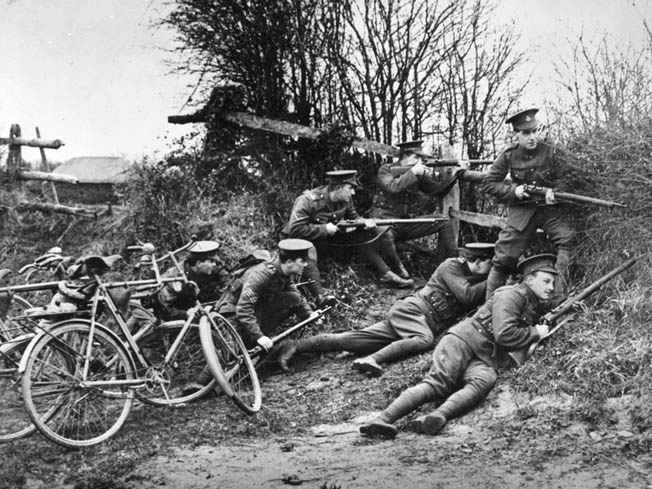
Eventually the argument for a shorter rifle prevailed, particularly as even a shorter rifle’s barrel was still capable of greater accuracy than the average conscript could achieve. In this era many armies were slowly transitioning to large forces of conscripts who would transition into the reserves for long periods after a few years of active service. Although Great Britain’s army was still a relatively small professional force optimized for securing a far-flung empire, it still took the new lessons to heart and set about perfecting its rifle design.
The result was the Short Magazine Lee- Enfield No. 1 Mk. III, standardized in 1907 and often abbreviated as the SMLE. The soldiers who carried it soon modified this acronym into the nickname “Smelly,” which bore no relation to their opinion of the weapon. As adopted, the rifle weighed just under 8 3⁄4 pounds with a barrel length of 25.2 inches. It had a detachable magazine that held 10 cartridges of .303-caliber ammunition, though in practice the magazine was most often reloaded using stripper clips rather than swapped out for a new one. A magazine cut-off device could be used to block the firer from loading fresh rounds from the magazine. This was thought to allow a more controlled rate of fire by making the shooter load a single cartridge at a time. The contents of the magazine could then be saved for heavy combat requiring a higher rate of fire or when ordered by a superior.

The Lee-Enfield’s sights were graduated to more than 1,000 yards. Originally, an unusual long-range sight was also added to the left side of the rifle’s stock for use in extended-distance volley firing. During World War I this volley sight, along with the magazine cut-off, would be deleted to simplify production. The bolt action was simple; in practice the user would chamber a fresh round by rotating the bolt handle upward and then drawing the bolt backward. This would eject a fired cartridge case. Pushing the bolt forward strips a new cartridge out of the magazine and pushes it into the chamber. Pushing the bolt handle down locks the bolt into place so the rifle can be fired. Critics state that the bolt design of the Lee-Enfield is weaker than the German Mauser’s. Although there is some truth in the assertion, it only comes into play with extremely high-powered cartridges such as those used to hunt large game. In practice, using standard military ammunition, the SMLE’s bolt is strong enough to handle the load.
Upon entering service, the Lee-Enfield went through a round of criticism, not unusual for a new weapon in any age. Shooting was a serious sport in England at the time and pundits criticized the Lee-Enfield for problems with accuracy, recoil, and weight. As expected, some took issue with the shorter barrel, claiming it was responsible for the accuracy issues. Most of the complaints came from expert riflemen, armorers, and similar experts. The average soldier seemed to have few such qualms, however, and the weapon soon gained an increasingly good reputation among them. For service use, it was robust, reliable, and effective. Its bolt action was quick and smooth, allowing a soldier to make fast followup shots. Its 10-shot magazine had twice the capacity of its contemporaries, enabling small units to lay down an impressive rate of fire and keep it up longer.
The first major test for the design came with World War I in August 1914. The British Army was small at the time, about 247,000 strong and fully half that number went to France as part of the British Expeditionary Force. Shooting skills had been emphasized after marksmanship problems were noted during the Boer War over a decade earlier, so the average English soldier was highly skilled with a rifle. It was not unusual for a soldier to achieve 25 aimed shots or more per minute. This came in handy during the first months of the war, when armies on the Western Front still maneuvered into battle, before the stalemate of the trenches trapped men below ground for four long years.
Private Frank Richards of the Royal Welsh Fusiliers used the Lee-Enfield in the First Battle of Ypres in the autumn of 1914. His unit was advancing by platoons across open fields when they took rifle fire from a wooded area 600 yards ahead. The platoon went into a prone firing position and opened fire with their Lee- Enfields. Soon a group of Germans began advancing toward the British, who poured fire into them. Richards recalled “We had our rifles resting on the bank … and it was impossible to miss at that distance. We had downed half a dozen men before they realized what was happening; then they commenced to jump back into the trench … but we bowled them over like rabbits…. We had expended our magazines, which held ten rounds—there wasn’t a live enemy to be seen and the whole affair had lasted half a minute.”
In the German Army the First Ypres became known as the “Massacre of the Innocents” due to the 25,000 student volunteers who fell to British musketry during the fighting. The amount of fire British units could produce was so heavy German General Alexander von Kluck reportedly believed his opponents were armed completely with machine guns. In fact, British battalions had only two apiece and were often short even that paltry number. Casualties were made worse by the close order troops often used when advancing early in the war.
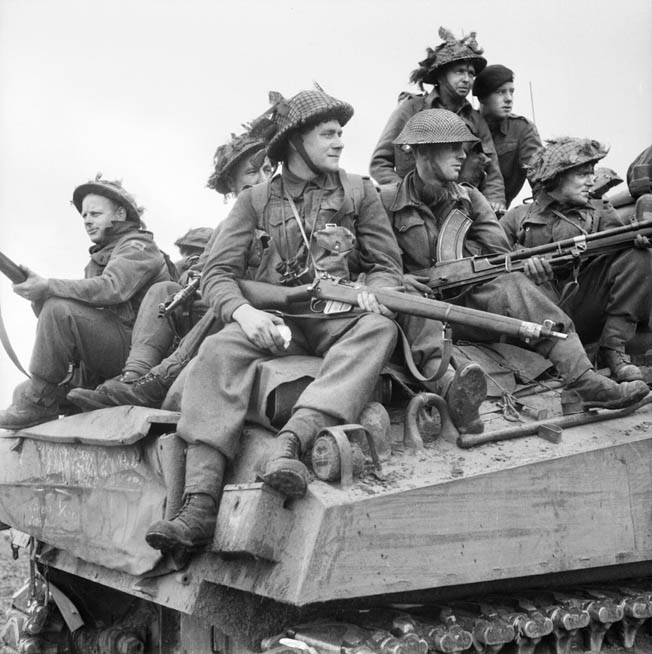
By 1915 the days of mobile columns were over and the armies settled into trench systems that extended hundreds of miles. British casualties were heavy, which diluted the army’s overall skill level as quickly trained replacements took over for the now lost regulars. Still, a few skilled marksmen remained, appearing from their trenches to take snap-shots at the enemy before ducking back down. A Canadian, Private Henry Norwest, was famed for his quick-shooting skills. He was a Metis Indian who was noted for his ability to rise, aim, fire, and reload before aiming and firing again in less than two seconds. Over time he is known to have killed at least 115 enemy troops before a sniper felled him in August 1918. Such shoot- ing became harder as more German snipers were equipped with telescopic sights for their weapons. The SMLE saw its own sniper version as well, known as the No. 1 W (T).
Conditions in the trenches were hard on rifles and the SMLE was no exception. Mud could clog the action or the barrel. As a countermeasure, soldiers would plug the barrel with a cork or place a sock over the muzzle. A canvas breech cover was produced that could be clipped over the bolt and receiver to protect it from dirt and the elements. Keeping a weapon clean was a true challenge in the filthy conditions of trench warfare; soldiers could be charged with an offense for having a rusty or dirty rifle so maintenance took an even larger part of an infantryman’s time. The Lee-Enfield was a quality weapon with close tolerances in manufacturing, so extra care had to be taken, but if care was given the rifle stayed in action. Rifles with worn-out barrels were used to launch rifle grenades.
The disadvantage of having such a well-made weapon came on the production end. Only 108,000 rifles were made annually before the war began, not enough to equip the British Empire’s forces once the war was underway. Great increases were made once the conflict started; for example, from August to December 1914 approximately 120,000 SMLEs left the production line. This still was not enough so older Lee-Metfords were used for training and other designs were adopted as substitute standard weapons, in particular the P-14 Enfield made in the United States and called the No.3 Mark I in British service. Rifles were even ordered from as far away as Japan. SMLE production continued to increase. In 1917 more than 1.2 million rifles left the factory and more than 1 million in 1918.
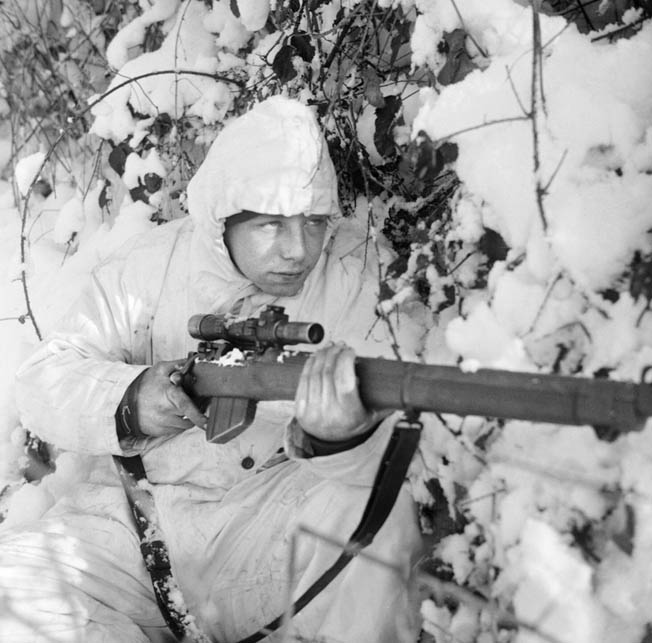
After the war the SMLE again became the standard for the army with the substitute designs being placed in storage. While development between the wars did occur in semi-automatic weapons and new cartridges, scarcity of funds and abundance of rifles and leftover ammunition meant the Lee-Enfield served on in the hands of Imperial troops around the world. The biggest advancement was in redesigning the rifle to simplify production in the event of another war. The barrel was made slightly heavier to improve accuracy, and the sights were reconfigured and the muzzle was changed so that the barrel protruded slightly and was fitted with a new spike bayonet instead of the long blade-type from the previous conflict.
The improved SMLE was designated the No. 4 Mark I. It was approved for service just as World War II began. Initially, many soldiers did not take to the new rifle, preferring their old No.1 Mark IIIs. Despite this, more than 4.2 million No.4s were made by the end of World War II. Only about 10 percent of them were made at Enfield while the rest were made at the various factories set up around the Empire to increase production. The Australians continued to make the older Mark at their Lithgow Arsenal, having never adopted the No. 4. The Ishapore Rifle Factory in India also turned out the No. 1. The newer Mark was made in Canada at the Long Branch Factory near Toronto and in the United States by the Savage Arms Company. The American-produced rifles were stamped “U.S. Property” to help justify their distribution through the Lend-Lease program. The SMLE had truly become a worldwide rifle.
Most of the combatants started World War II using rifles very similar to those they used to fight the previous conflict, and often they were the same designs. A few semiautomatic rifles made their appearance early in the fighting, such as the American M1 and Soviet SVT-40. As the war continued, other nations, such as Germany, put forth their own new designs, including the first true assault rifle, the STG- 44. Nevertheless, most of the war’s riflemen still carried bolt-action weapons and the SMLE still outshone them all. The days of volley fire and rows of men in trenches were gone, but the Lee- Enfield’s smooth action and 10-round magazine still allowed Commonwealth soldiers to put out effective fire.
The SMLE No. 4 was also used to create variants, including a sniper model, the No.4 (T). It was a respectable long-range shooter, with good accuracy well past 600 yards. More than 24,000 were made and the design survived in British service into the 1970s and beyond. Two soldiers of the Cambridge Regiment, named Arthur and Packham, used their sniper SMLEs while hunting for a German sniper who had shot a British officer. For three days they stalked their opponent with no luck. But near the end of the third day Arthur spotted a wisp of smoke rising from some cover. The enemy marksman was having a cigarette. While Arthur spotted, Packham slowly slipped his rifle through their camouflage net. He took careful aim but could not get a good shot at the German. Now they knew the sniper’s hiding place, so they returned before dawn the next day and got ready. Shortly after 6 AM a German appeared. Just his head and shoulders were silhouetted in an opening in the vegetation. It was enough. Packham fired and was rewarded with a view of the enemy sniper’s rifle flying into the air as he collapsed.
The other major variant was the No. 5 Mk. 1, popularly known as the Jungle Carbine. It had a shorter barrel with a flash hider and cut down stock. It was lighter and handier but its recoil was harsh, which made it unpopular with the troops. Most were issued to troops in the Far East though the British 6th Airborne used them in Europe at the war’s end.
After the war ended the British Army retired the remaining No. 1s and retained the No.4 as its primary rifle. While the service experimented with a replacement, its soldiers took the SMLE into action again in Korea. In April 1951 the Gloucestershire Regiment’s 1st Battalion had to defend Hill 235 against several days of determined attacks by Chinese troops. Their Vickers machine guns ripped apart the enemy formations while the riflemen fired their SMLEs until the rifles were too hot to hold any longer. When that happened they picked up cool weapons from the dead and wounded. Sometimes a single bullet would fell two of three Chinese, so tightly packed together were the attacking regiments. The British eventually had to withdraw but they left behind some 10,000 enemy casualties.
Outside of England, at least 46 nations adopted the SMLE in its various guises, accord- ing to one estimate. India and Pakistan continue to use thousands of SMLEs, though they are no longer frontline weapons. Some Afghan fighters prefer the Lee-Enfield for its superior range compared to the AK-47. They still show up across the Middle East, Asia, and Africa. Even the Canadians still give them to rural northern mili- tiamen known as the Canadian Rangers.
The British Empire created a rifle that has endured for more than a century. It is said the sun never set on the British Empire. Unlike the days of empire, the sun still has not set on the life of the SMLE for soldiers still carry it into combat in Asia and Africa. It shows no sign of disappearing anytime soon.
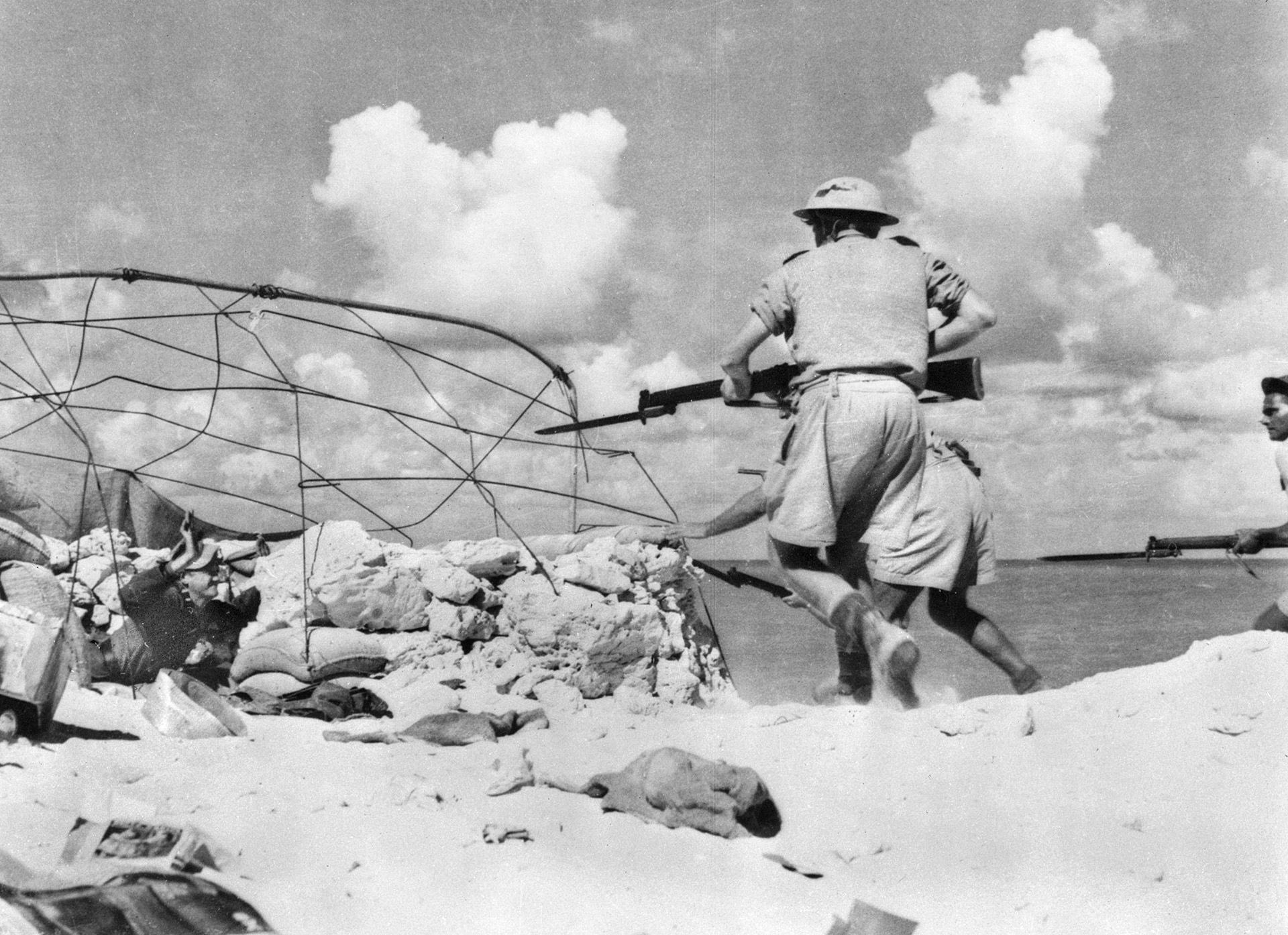
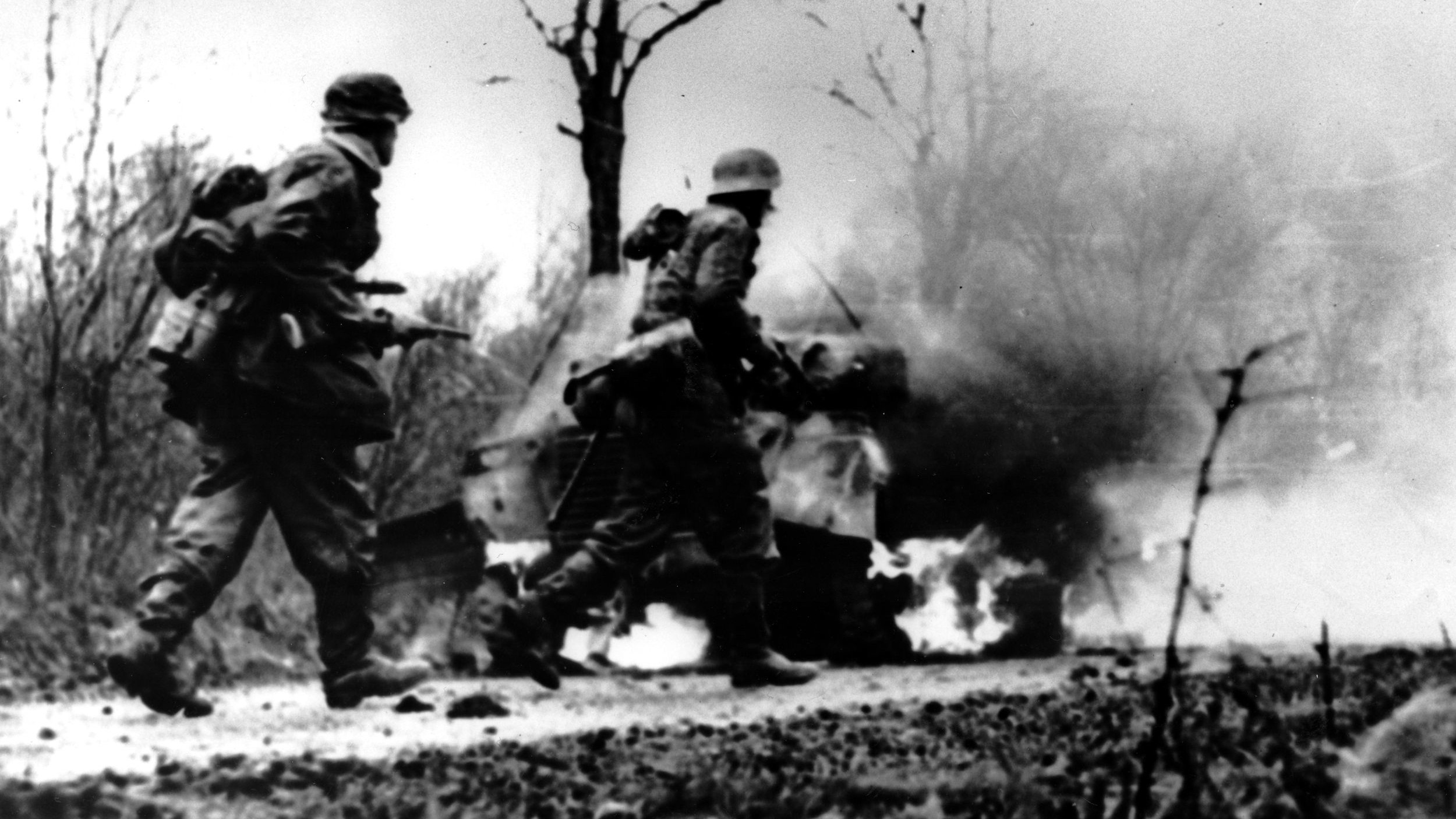
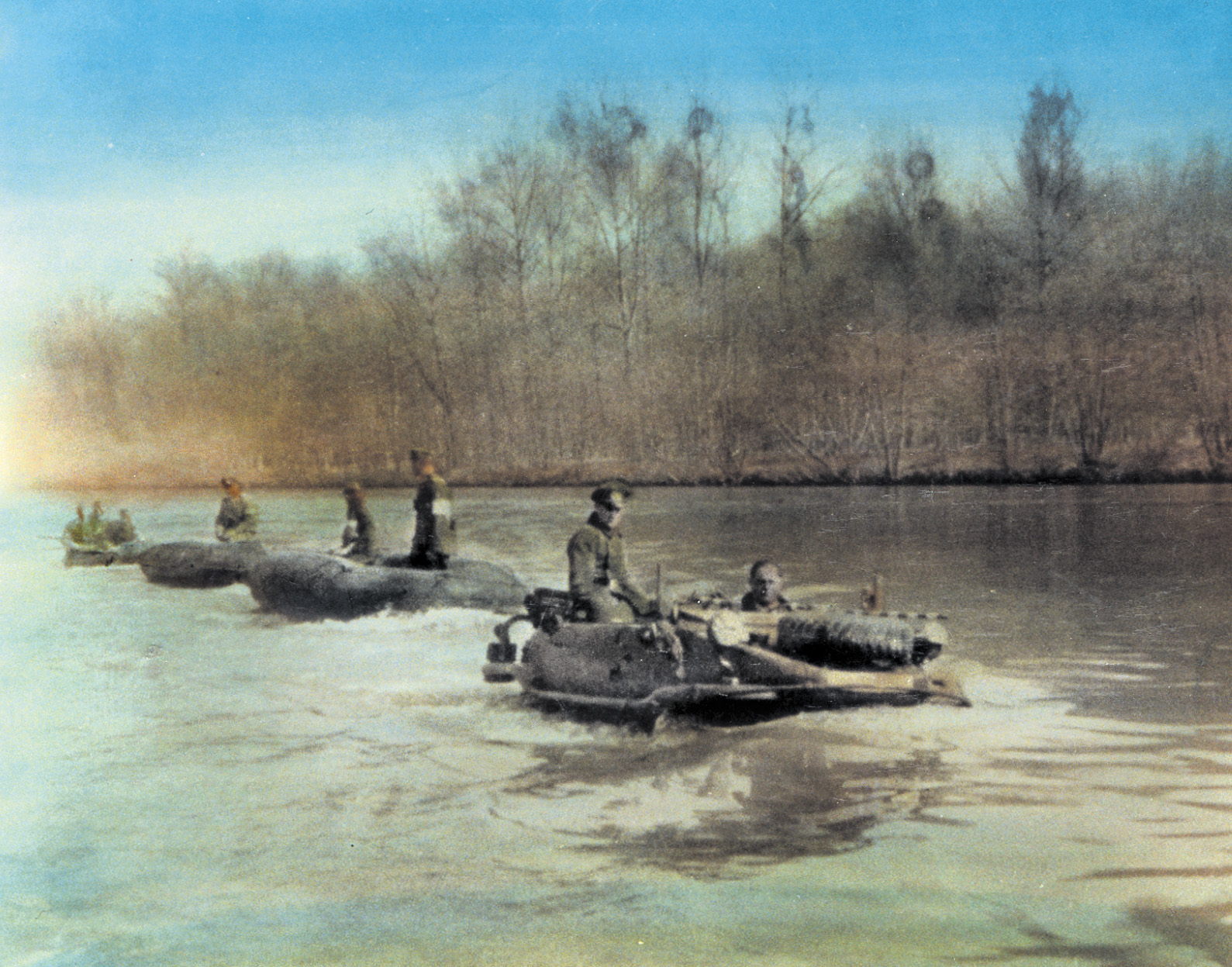
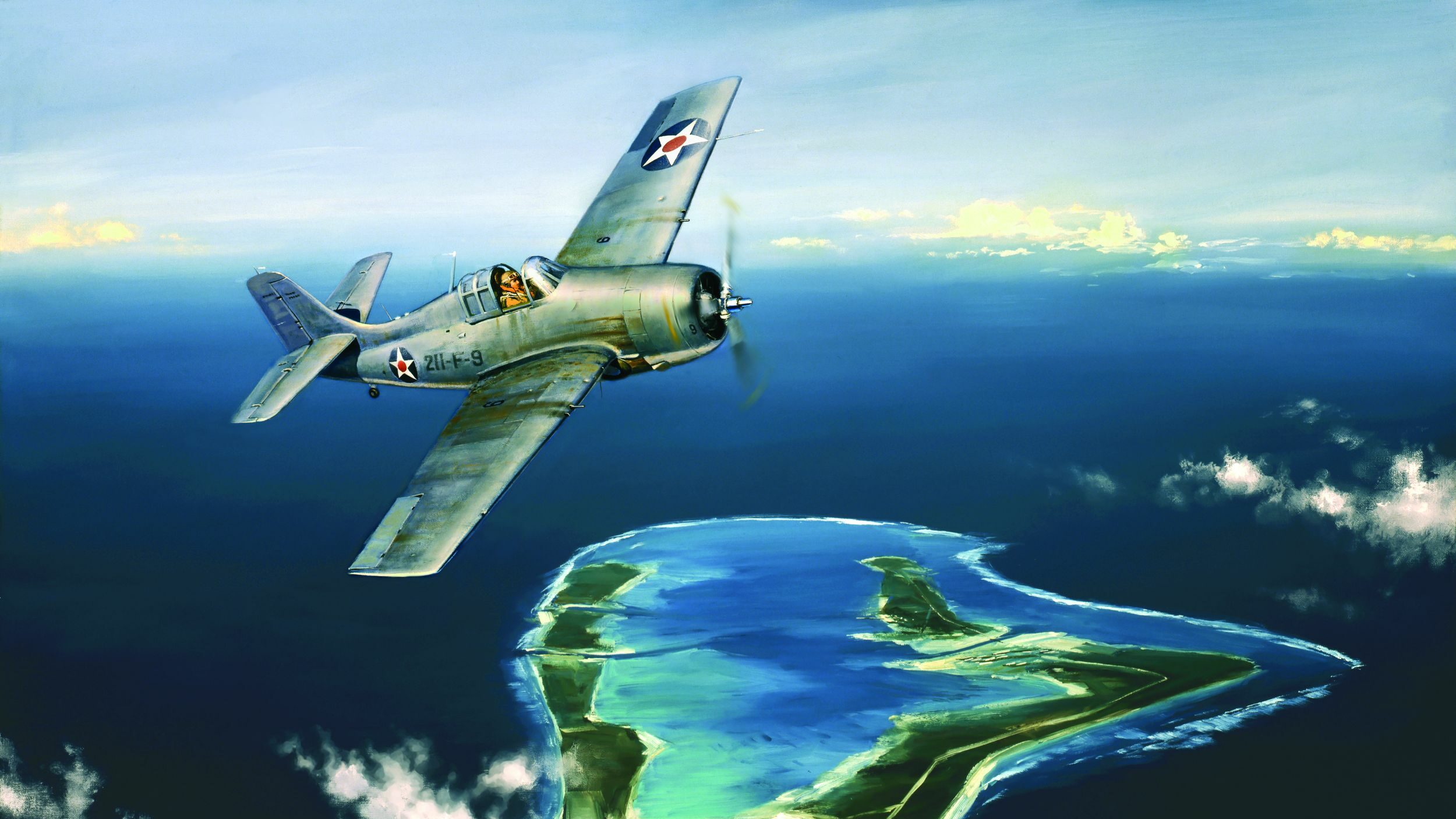
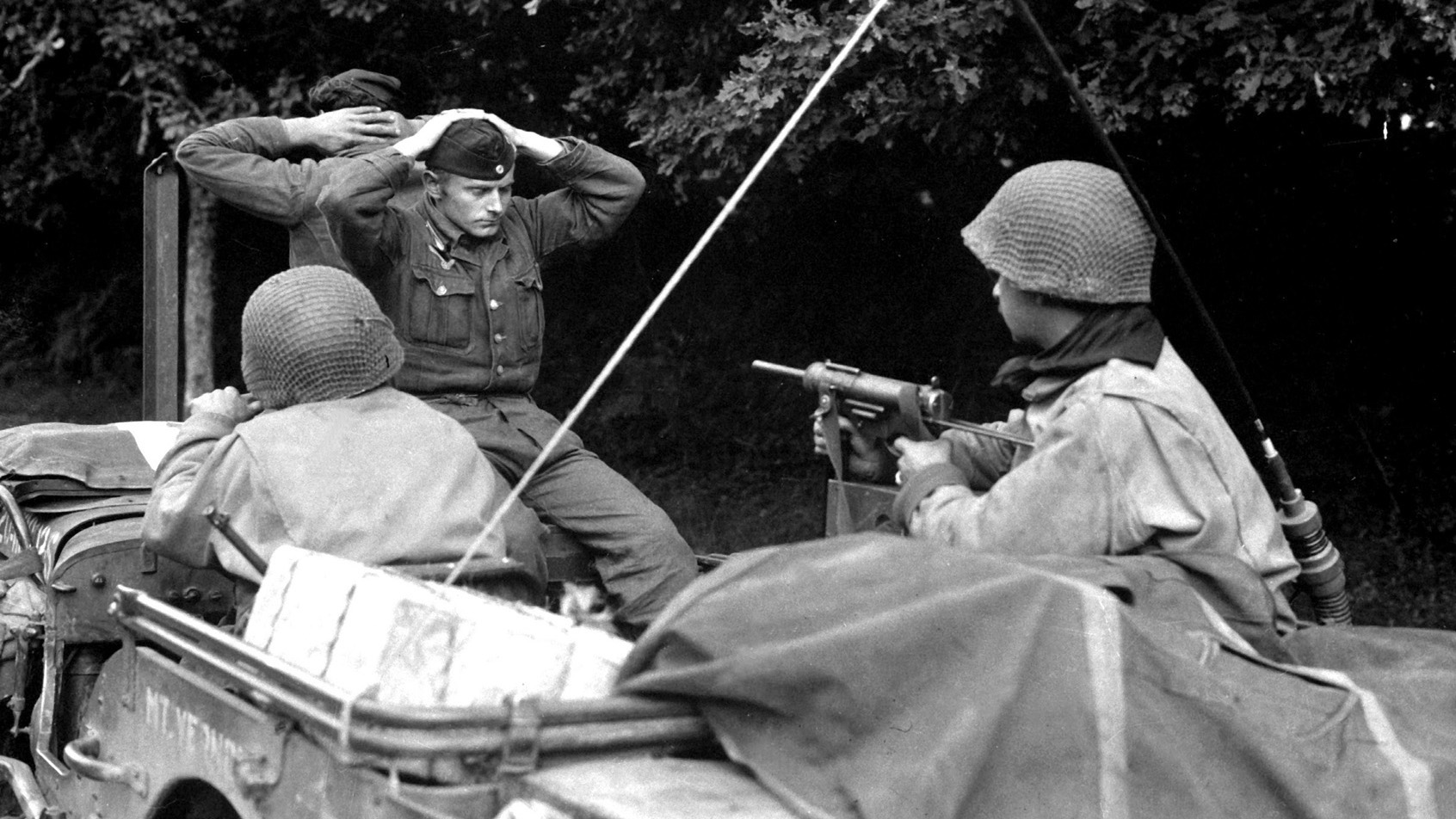
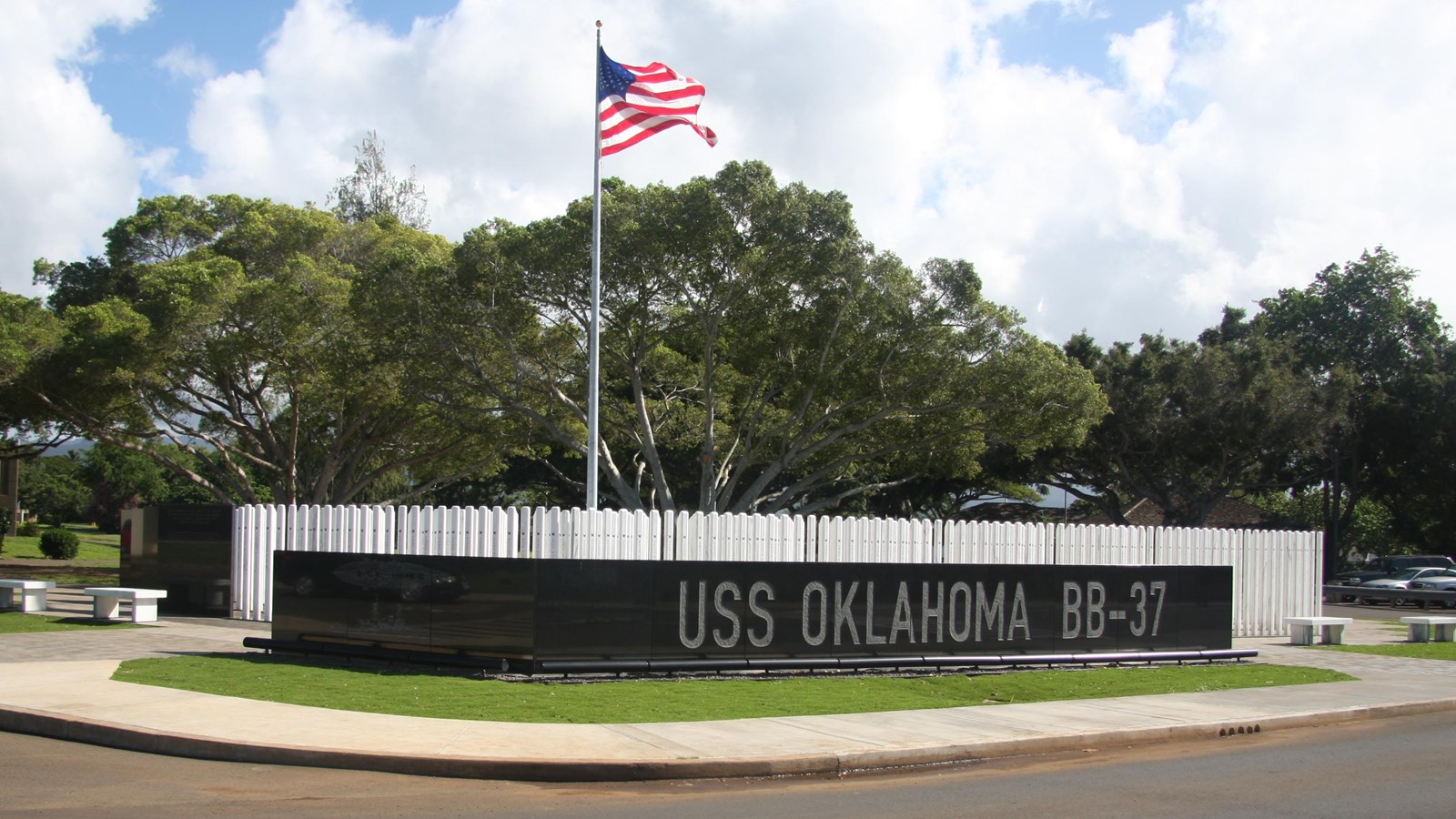
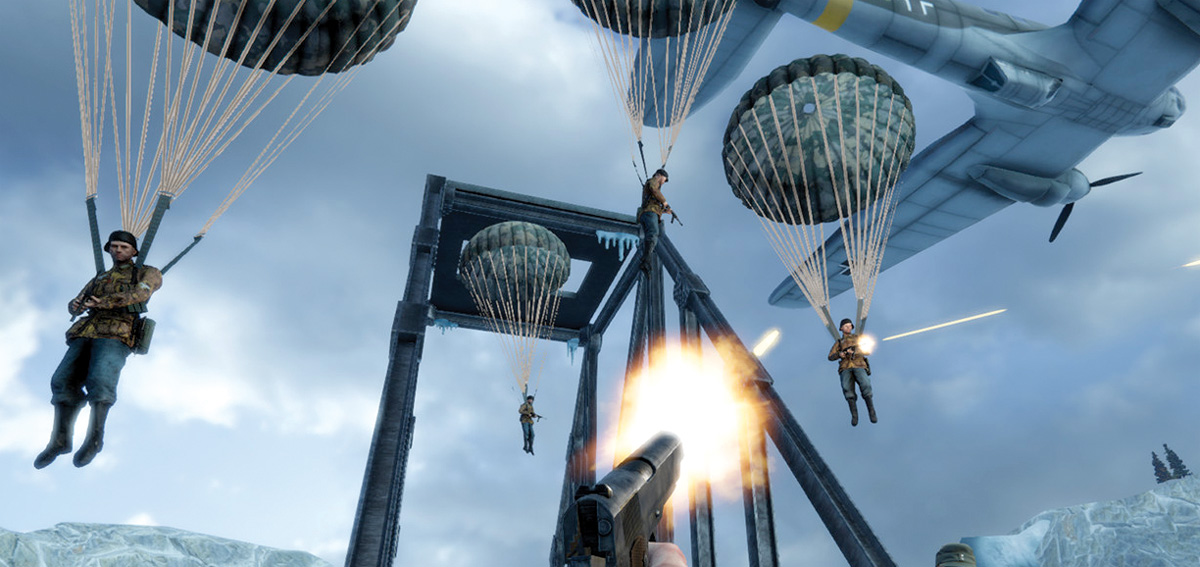
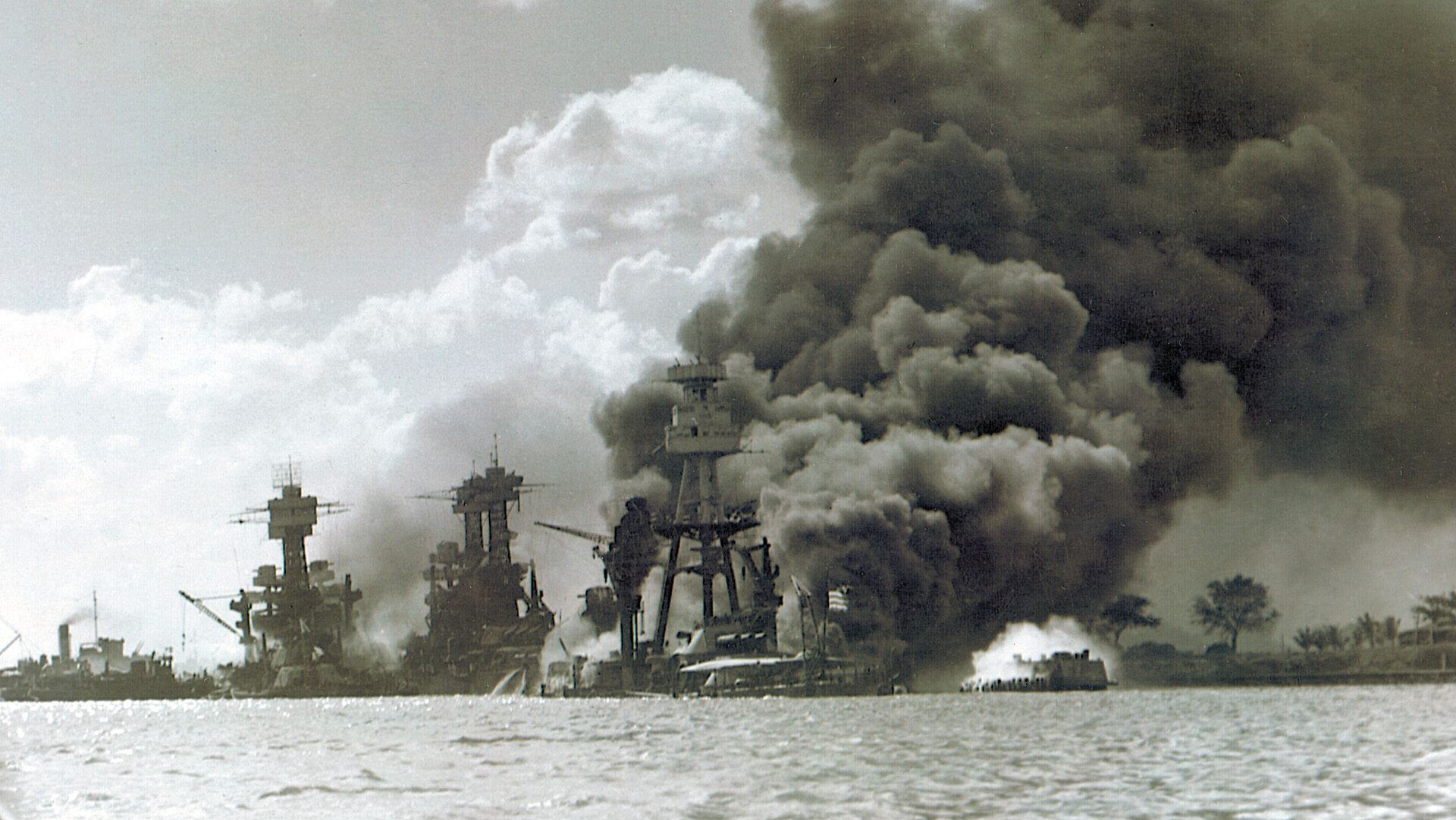
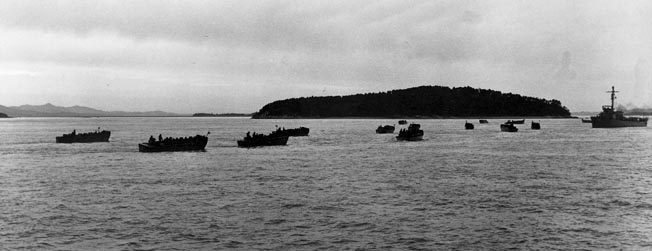
Join The Conversation
Comments
View All Comments